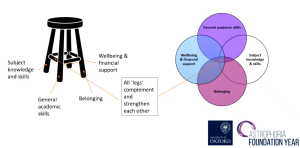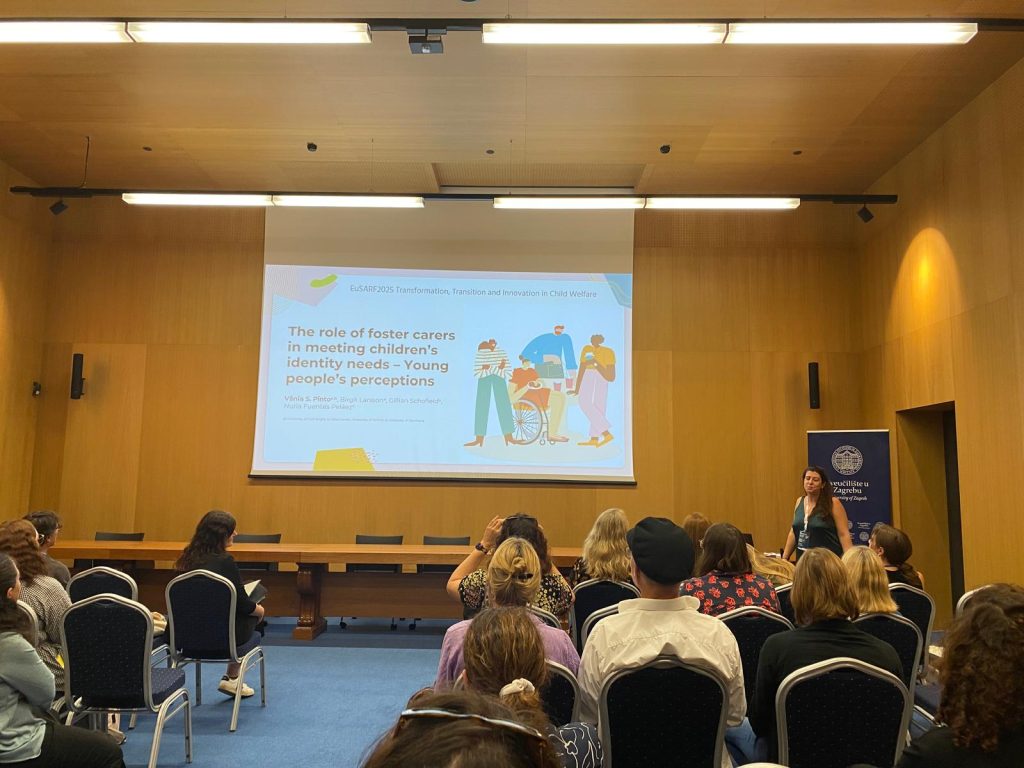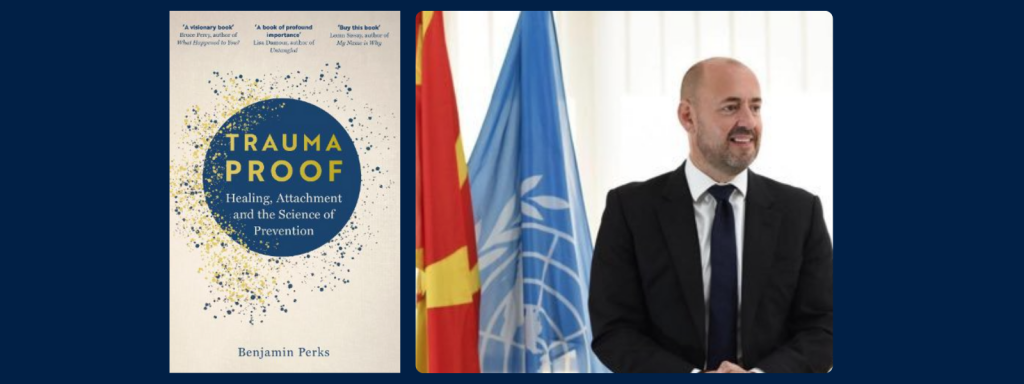
Reflections on the latest Rees Centre lunchtime webinar: Pathways into and through Higher Education for young people with experience of children’s social care
Earlier this month, I was very pleased to chair a lunchtime webinar from the Rees Centre focusing on a study led by Professor Leon Feinstein: Pathways into and through Higher Education for young people with experience of children’s social care. The study, funded by TASO and Foundations, is the latest publication from the Centre’s post-16 research theme.
In addition to Leon’s presentation of key findings, Professor James Robson (a co-author of the study and Director of the Centre for Skills, Knowledge, and Organisational Performance) joined our panel discussion to reflect on some of the policy issues and implications. Dr Jo Begbie (Director of the Astrophoria Foundation Year) then reflected on the approach of the Astrophoria Foundation Year and the wider University.
Leon presented analysis of data from five newly matched national administrative data sets exploring the pathways of a birth cohort of young people. The presentation focused on entry to HE by the age of 22 for different groups of young people with experience of children’s social care. As historically the focus of research on care and HE has mainly been young people meeting the statutory definition of care leavers, I was keen to learn how the pathways of other groups of young people (e.g., children in need) differed from those of care leavers.
The presentation showed that rates of entry into HE by the age of 22 were lower for young people with experience of children’s social care than for the general population. Fourteen percent of care leavers in the sample entered HE by the age of 22 compared with 39% of those eligible for free school meals (FSMs) and 56% of the total population. It wasn’t only the rate of entry to HE by care leavers that was lower than rates of entry for the general population and those eligible for FSMs. Only 16% of young people ever on a child protection plan, 18% of those who had been children in need for more than six months and 29% of those who were children in need for less than six months had entered HE by the age of 22. In terms of routes into HE, the study shows that a higher proportion of young people with experience of children’s social care took vocational qualifications than the proportion of the general population (36% vs. 16%).
There are many things I could reflect on in this blog, but three points particularly resonated with me:
The study highlights the importance of vocational courses as a route to HE. If you have faced or are facing significant disruption to your education for whatever reason, and if you don’t have the economic and social safety net of family, a vocational qualification providing an identifiable route into employment may offer some security even if you aspire to enter HE. As James reflected in the panel discussion, this study highlights how vocational pathways are a critical enabler to allow care experienced young people to get into HE, but we need a more integrated tertiary system focused on collaboration and not competition between institutions to support this.
Secondly, the findings of this study help to justify the recent extension of support provision at some universities to ‘care experienced’ students as opposed to those fitting the narrower statutory definition of care leaver. The data from this study suggest that inequality around entry and routes into HE extend to the wider care experienced cohort.
Finally, the approach of the Astrophoria Foundation Year highlights how reaching HE is not the end of the pathway and how universities need to consider the raft of support and skills needed for care experienced students to thrive within HE. I particularly liked Jo’s use of a stool’s legs to illustrate the need for different types of support (shown below). The discussion also emphasised the importance of ‘belonging’ and how universities have an active role in promoting that feeling amongst its care experienced cohort.

Source: Dr Jo Begbie, Astrophoria Foundation Year
Written by: Georgia Hyde-Dryden









